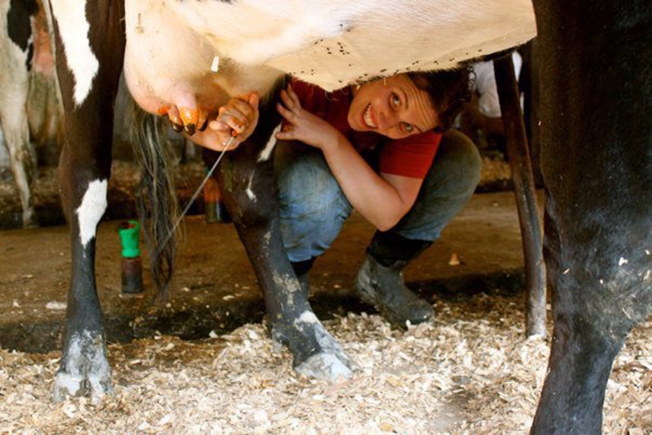By Garland Mason
Ever wonder what’s in your milk? The short answer is obvious – milk. As you may have guessed, milk is a single ingredient food, so there’s nothing in it but what’s come straight from the cow.
That’s not to say that the cow is the only one worried about getting that milk to market, however. As a matter of fact, there’s usually a whole team of people working on getting that milk out of the cow and into your fridge.
First there’s the cow. Without her, we’d have no milk. But it’s not as simple as it once was. There’s more to it than the cow eating grass and later depositing the milk in a bucket. In fact, there’s a science that dictates what she’ll eat each day, her comfort, her health, when she’ll give birth, how much milk she’ll give, and how the milk will be treated after it’s left the cow’s udder.
Nutrition.
Nutritionists help farmers decide what the cow eats, in what ratios, and how much she’ll get. On grass-based farms much of this is done by the farmers. With knowledge developed over many seasons, farmers can “read” the pasture. They consider what the weather has been and the time of year, and they maintain an intimate understanding of the soils of each particular field, as well as what types of grasses and flowering plants are growing there.
On farms that are not primarily grass-based, a nutritionist is often consulted in order to determine the proper balance of grasses, legumes (think clover), grains, minerals, vitamins and other ingredients necessary for milk production and overall health. This is known as the total mixed ration, or more commonly, TMR.
Reproduction & Replacements
Ever heard of an “A.I. guy”? That’s the person that comes and breeds dairy cattle using artificial insemination. Many farmers can do it themselves, but larger farms often hire a service to manage the breeding and genetics of their herds so that they can focus on other things. Of course bulls could get the job done as well, but most farms prefer to use bulls as a last resort. A.I. means the calves on farms are more genetically diverse, and bulls can also be dangerous to work around.
Breeding is just the beginning though. Once a calf is born, there are two and half years of care before she will join the milking herd. During this time she is referred to as a replacement heifer. Eventually she will take the place of a cow that has aged out of the herd.
Her life begins with milk feedings several times a day, along with general daily care and management. She is eventually bred as a heifer (a cow that has not yet given birth), and finally, she will give birth to her own calf, at which point she will begin to lactate and be milked.
Milk
On smaller farms the milking is often done solely by the farmer. On farms with bigger herds there are often a few hired hands to help out with milking and other jobs. This means that the farmer is not only responsible for the care and management of the dairy herd, crops, and farm business, but also serves as a supervisor and manager of the human resource aspect of the business.
Either way, all of the milking cows in the herd must be milked two or three times per day. Cows are creatures of habit, so they come into the milking barn or milking parlor with comfort and ease. They line up in their usual spot and the milker cleans their teats with an iodine solution before attaching a milking machine to their udder. The milking machine has a gentle pulsating suction that closely mimics the mouth of a calf, encouraging the cow to let down her milk. Most cows produce between five to ten gallons of milk per day at their peak lactation.
From the milking machine, the milk is sent into a system of stainless steel pipes leading to the milk room where it is pumped into a refrigerated bulk tank. There the milk is cooled and stored until the milk truck comes and pumps the milk out and into the tanker.
Distribution.
Depending on what company is buying the milk, the milk may be trucked locally, or may leave the state to be processed. The truck driver takes a sample of milk from each farm to be tested for antibiotics and other contaminants; this means that there are never antibiotics found in the milk you buy at the store, whether it is conventional or organic.
Several farms in Rutland County sell their milk to Thomas Dairy—that means that the milk is hauled just a short distance to Rutland Town to be pasteurized and packaged into the container you find in the store. Your milk would skip this step if you were to buy it from a local farmer selling raw (unpasteurized) milk directly from the farm to the end user.
The bottom line is that there’s nothing in your milk but milk. But that doesn’t mean that it’s simple. For every carton of milk you buy, you can guess that a number of people have put a lot of time, effort and energy into making sure that the milk you are buying is from healthy cows and that the milk you’re getting is pure and nutritious.
Garland Mason heads up RAFFL’s New Farmer Initiative and Farm to School and Institution activities. She lives and farms West Tinmouth. You can reach her at garland@rutlandfarmandfood.org.
